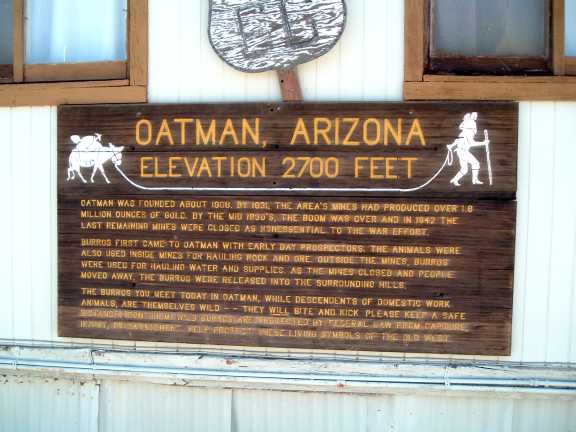Wild Burros of the Mojave Desert
Southwestern United States
Along Historic Route 66 - Oatman, Arizona
June 2006
| This particular "wild horse" trip has been a desire of mine for a few years, but for some insane reason I could wait no more and dragged Derry and Steve with me out into the Mojave desert in the SUMMER! Having worked with many burros over the years and being owned by one myself, I felt it important to take a look at the feet of wild burros just as many have studied the feet of wild horses. Then the question arose...where to find a population of wild burros that one can get close enough to without tromping around for days in the desert? I found a nearly perfect answer - Oatman, Arizona. Once a thriving gold mining town, Oatman is now considered a tourist attraction "Ghost Town." The feature that drew me to Oatman is the wild burros that come in from the desert every day hoping to mug the tourists for food. After the gold mine closed, the burros were turned loose to fend for themselves. Today, the burros technically come under the jurisdiction of the BLM, but they are considered part of the community to the around 100 or so people still living in Oatman. Call me an East Coast sissy, but I did not relish the idea of hiking in the Mojave desert looking for burros I might never find. I am a tree person...I like big trees with big shade and streams full of cool water, especially in the summer! In Oatman, the burros would come to me! |
Copyright Notice: All images on this page are the property of Cindy Sullivan, Derry McCormick and Steve Dick. They may be reproduced for educational purposes only with appropriate credits given. They may not be reproduced for commercial purposes. |
|||
| The Environment of the Mojave Burros |
||
Desert Landscape Stark and seemingly barren, this
expansive desert vista has its own harsh beauty.
|
 |
|
This is the beautiful architecture of the desert and the home of wild burros. |
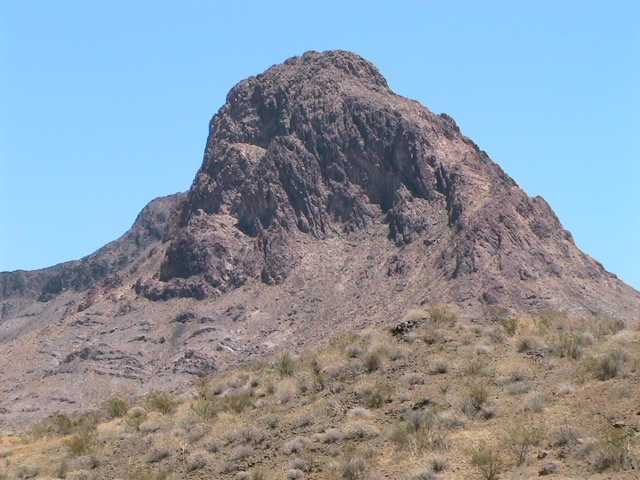 |
|
For
the life of me, I cannot imagine how the burros find enough water to
survive, let alone to thrive. The burros that come into town can get
water there, but there are other bands
nearby that never come in. The Colorado River is about 20 miles
or so away and the burros could trek there if need be, but according to
stories told by the locals, it seems that the burros don't go there
often. We were told a story of a recent trip some of the burros made to
the river which required that they cross a highway. As you can imagine
it created a bit of a furor with highway traffic! BLM had to come in,
round them up, and take them back to the Oatman area and threatened
that if the burros did that again, BLM would pull them all out
permanently.
|
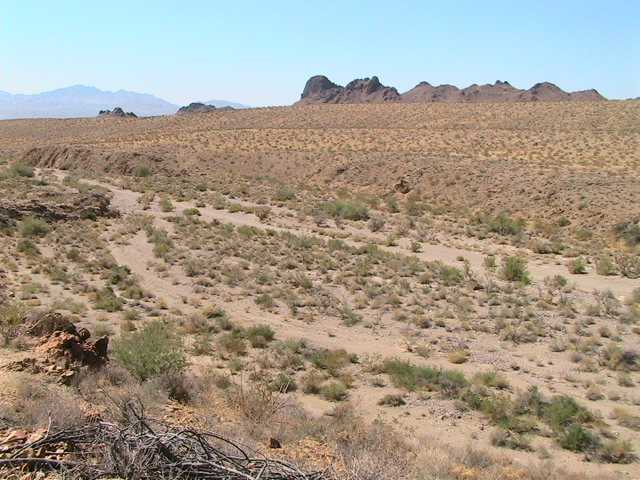 |
|
When
the rare rains come, flash floods are the consequence. Dry valleys such
as this one fill quickly and
rushing waters disappear just as fast. Steve and I could not resist
leaving the dirt road
and driving down in to follow this dry waterway - in a rental car no
less! After a few miles we realized there seemed to be no way to get
back out without the risk of ripping out the undercarriage of our car.
We drove a good ten miles or more in nowhere before we found a track
barely wide enough to accommodate the car. Our wheels were only inches
from the edge of a deep ravine. Risky business to say the least. I
think if Derry had been carrying a
gun, she would have shot us both!
|
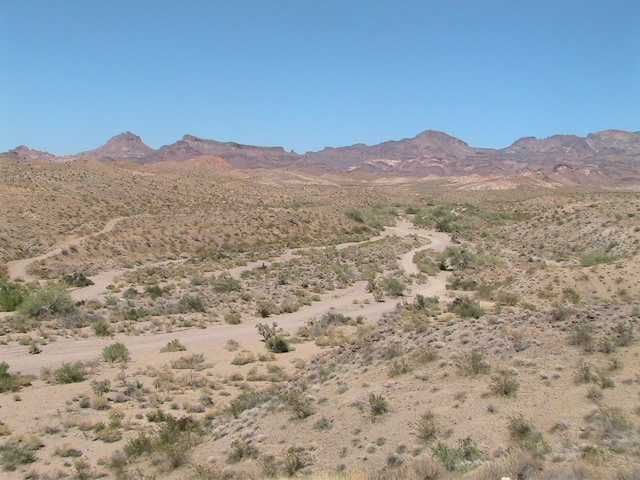 |
|
This is the type of ground the burros travel over in many areas of their range. 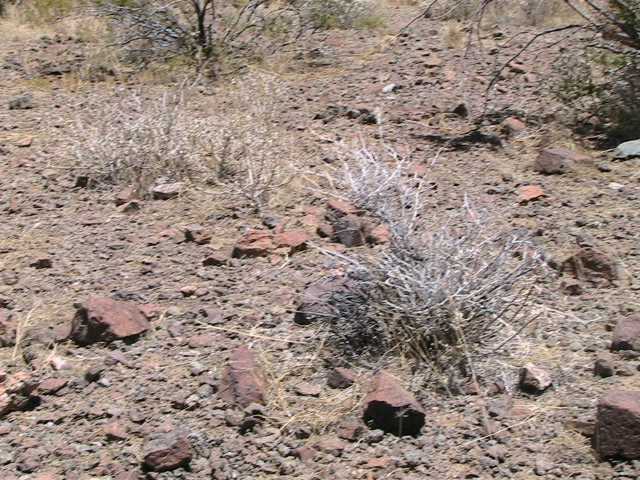 |
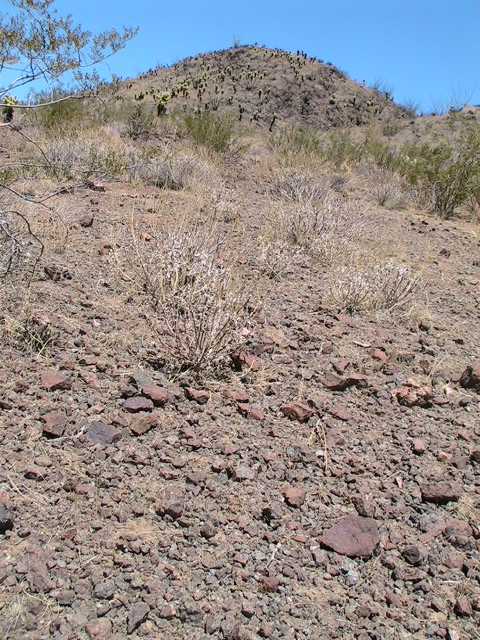 |
|
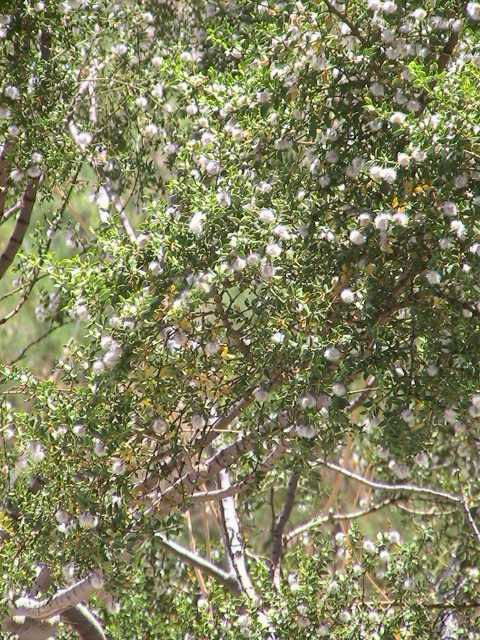 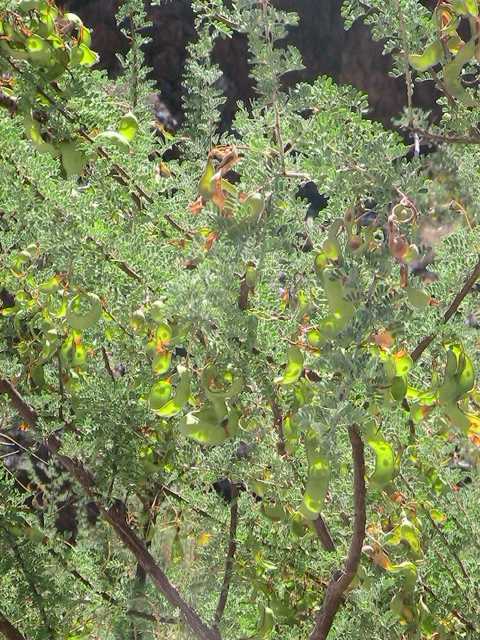 The closest thing to a tree
near Oatman were these shrubs. We noticed a
young jack start eating them after being chased by the mature male
attached to the herd - the big
jack you'll meet later in this page. It was unclear if he was eating to
appear nonchalant to the big male, or if he was stress eating after
being kicked out of town! But he wasn't eating them before and that
spot it right were he stopped running away form th ebig jack and he
immediately turned to eating the bushes as soon as his feet stopped.
|
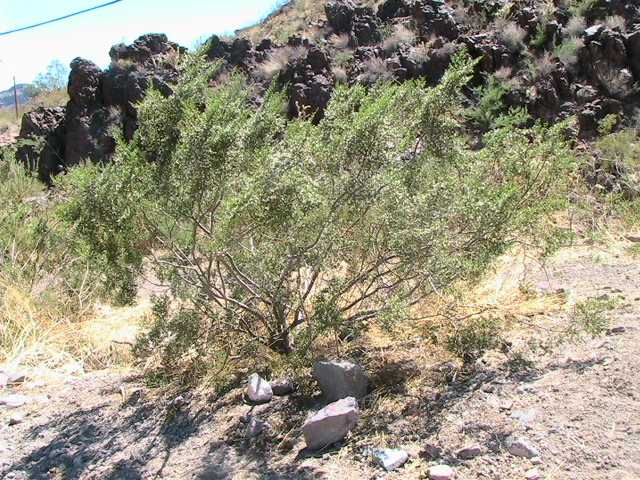 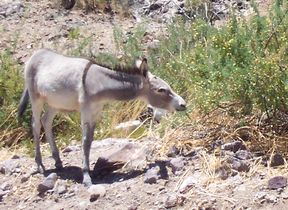 |
|
|
My ignorance about the desert
certainly showed when, as we drove through one area, I said to my
companions, "What are those weird trees all over the place?" Stepping
out of the car and a short hike later...boy did I feel stupid. But we
did get a close up look at some very cool looking cactus!
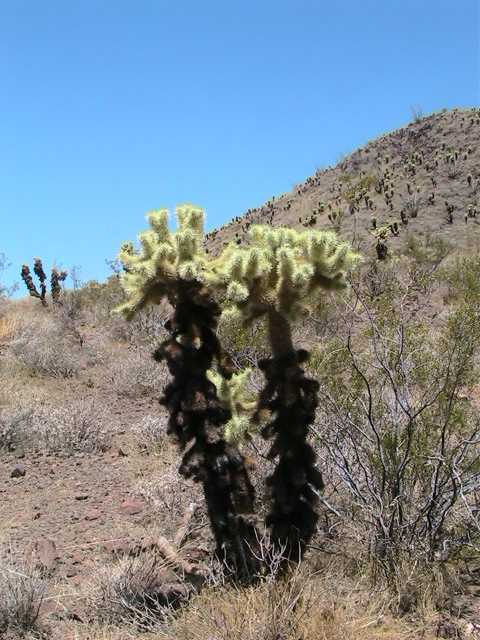 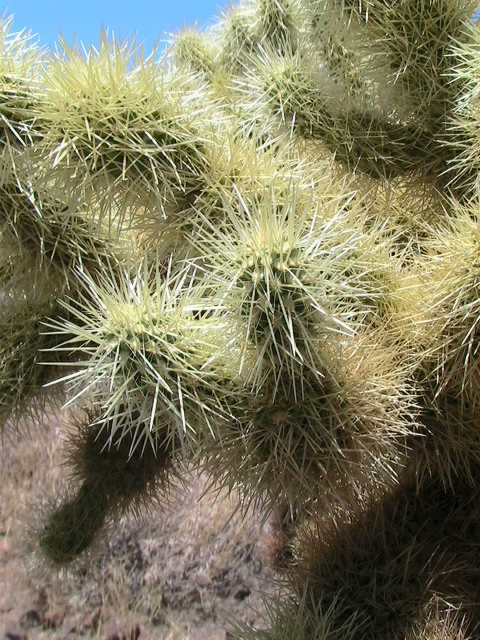 |
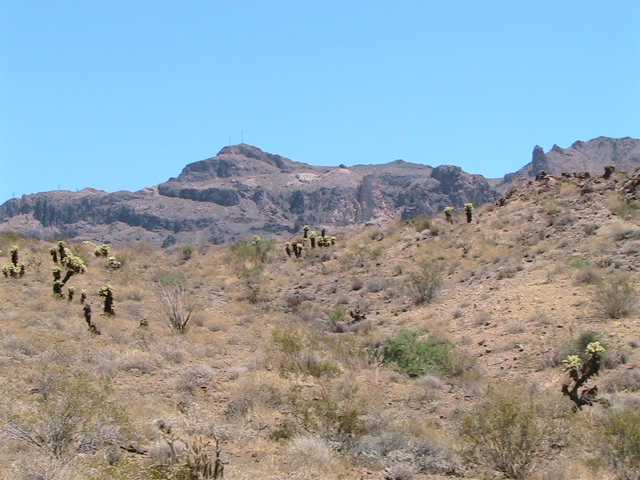 |
|
| The Burros of Oatman, Arizona |
||
And so they come into town, to
roam the main street of Oatman hoping
for handouts from the people. Some of the burros are very calm and
nonchalant, and some will aggressively chase someone if they have a
carrot in their hand.
"Hand over the carrot and no one will get hurt!" |
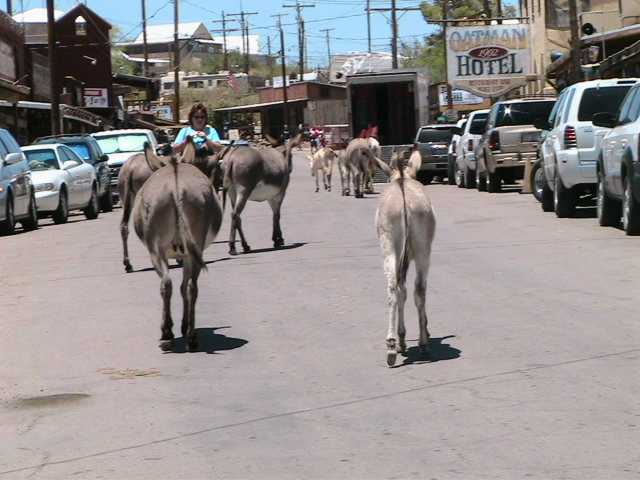 |
|
Some of the towns folk put out
alfalfa cubes for the burros. In part to minimize the number of carrots
they eat from tourists and in part to keep them close to their shops -
always a good draw to bring people (and their money) over.
|
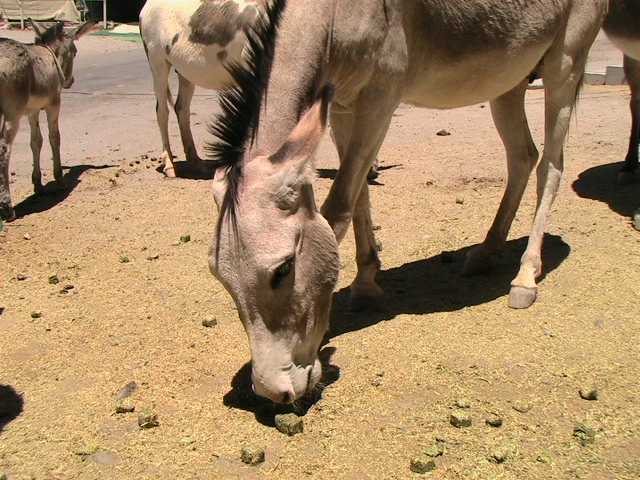 |
|
Baby Jack (below) checking us out as we walk into town, you couldn't ask for a cuter welcoming committee. Same baby (right) checking out alfalfa cubes given to his mother. 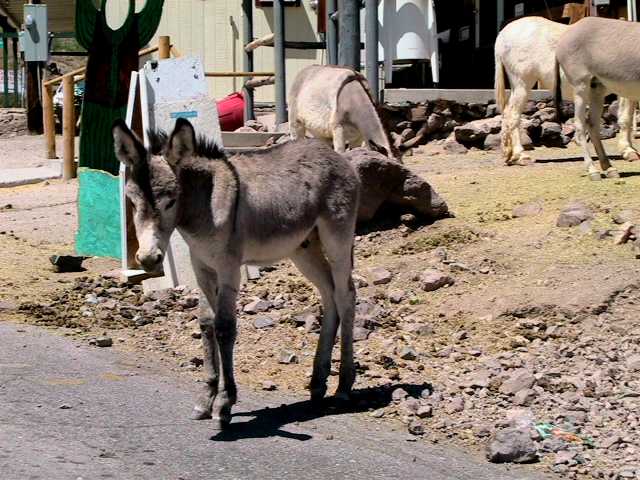 |
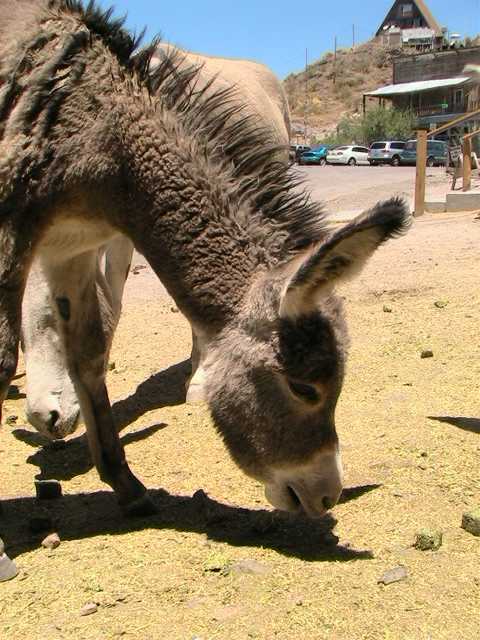 |
|
Mom to the
adorable jennet to the right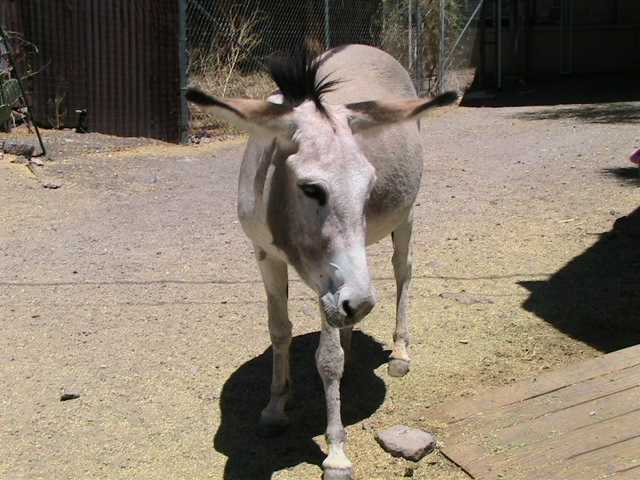 |
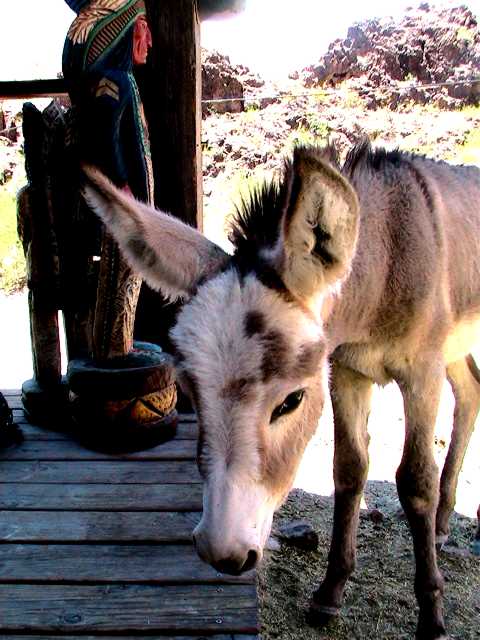 |
|
This old girl was gleefully greeted by some of the town's people. Estimated to be well into her 30's, they said that she had not come into town for several days and they feared she might have died. |
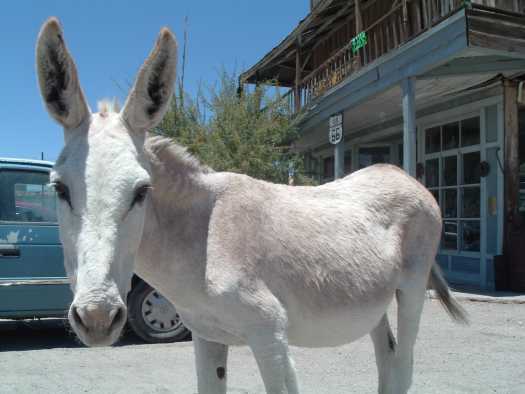 |
|
| This
handsome fellow is the jack attached to the herd of jenny's in town
while we were there. He only makes an appearance in town occasionally
and we were delighted that it was while we were there. You can see the
many scars on his neck from defending his "girls." He was not as
approachable as some of the others. He would pass near you if you
happened to be standing where he was going, but he generally ignored
people.
We are guessing he comes in to check on his herd, perhaps get some
water. He would rest in some shade away from the people, then leave. He
is sporting some big strong feet. Bigger than the others relative to
body size. There are some film clips of him I will process as soon as I
can and perhaps pull some closer views of his feet for you to view. |
||
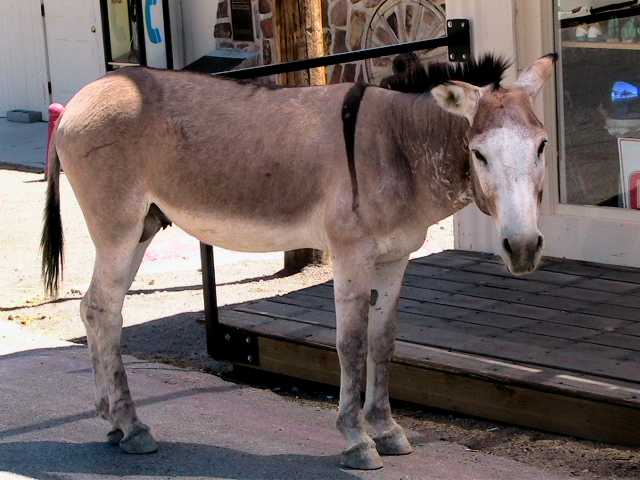 |
||
| Burro Humor We couldn't resist taking pictures - it was so hilarious where the burros chose to rest!! |
||
Old Jenny "parked" by the No Parking sign! |
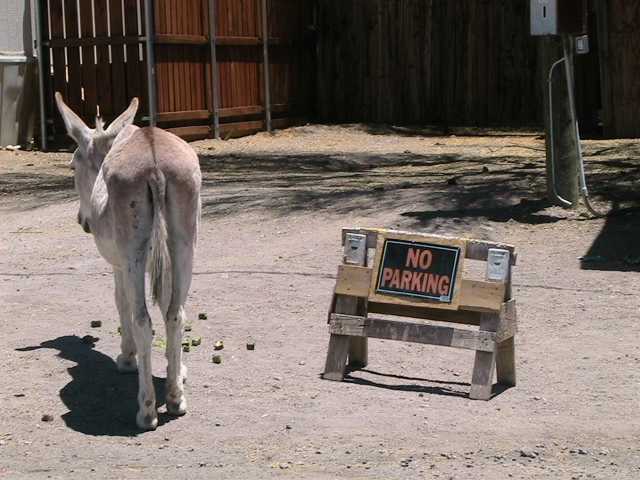 |
|
So, maybe if you aren't BORN with donkey stripes you can get them here? |
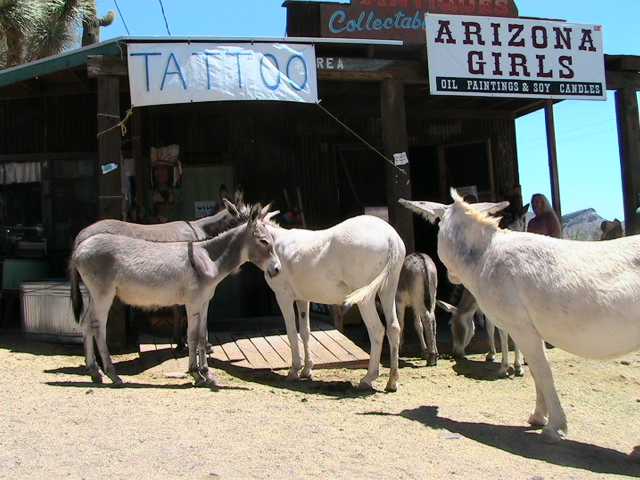 |
|
| The sign outside of this Chamber of Commerce/Community Hall building announces a Route 66 Roadside attraction. The red section of the sign reads: "GOLD MINING
GHOST TOWN, OATMAN, ARIZONA
This turn of
the century gold mining camp was on the original road
through the
Black Mountains and eventually became Route 66.
Burros
came with the miners and still roam the streets."
Do you think the burros can read??? Naw!! Well.....?? Hmmmmm! |
||
| |
||
|
The Oatman Hotel is listed on the National Historical
Building Registry and is the only two-story adobe building in Mojave
County. It is also reported to be haunted by a number of ghostly
guests. On March 29, 1939 Clark Gable and Carole Lombard spent their wedding night at the old hotel after having been married in nearby Kingman, Arizona. Over the years, the old hotel carried a number of names but was changed to the Oatman Hotel in the 1960s. The hotel is filled with memorabilia of the past and the Gable/Lombard Room has been refurbished to the period that they were there. The Oatman Hotel is one of the biggest attractions of the small village as the word of its many mischievous ghosts has spread far and wide. From
the web site http://www.legendsofamerica.com/AZ-OatmanHotel.html
It seems that one very alive
individual would like to check in!
We noticed this spotted girl
peering into an open window,.
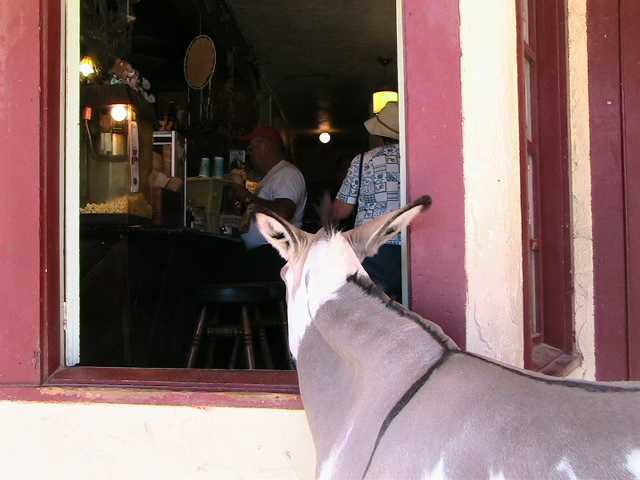 |
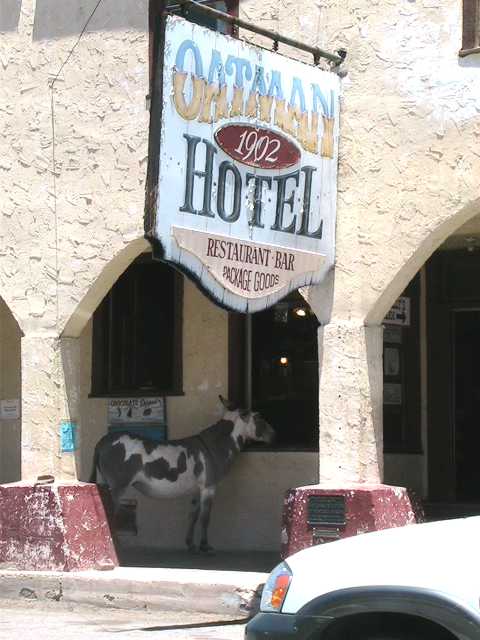 HELLOOOOOO! Service please!!!! |
|
| Burro Hooves Bear
in mind that
some of these burros spend much of each day wandering the streets of
Oatman, teasing carrots from the hands of visiting
tourists. In the evening they head back out into the desert. Some of
these burros only come to town on occasion. In spite of the unnatural
diet of carrots and alfalfa cubes, even the fattest burros had
amazingly beautiful feet and all appeared sound.
|
||
| Baby feet |
||
 |
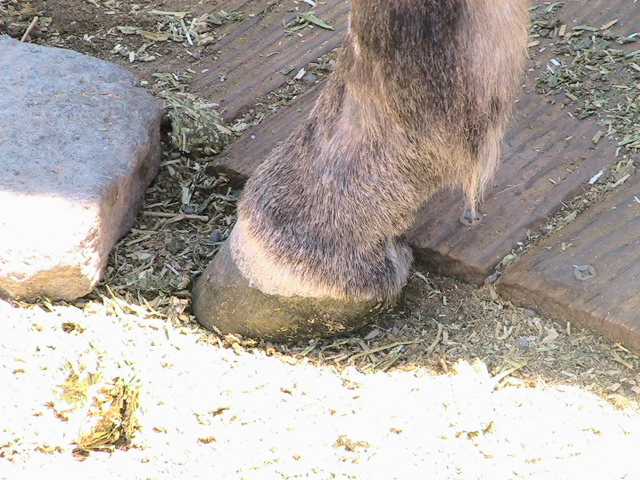 |
|
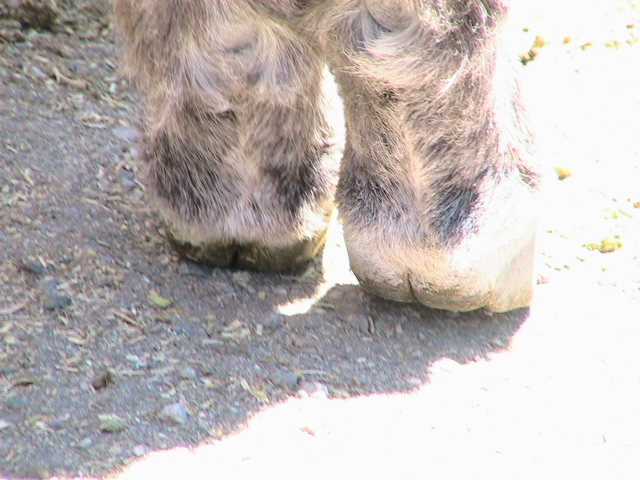 |
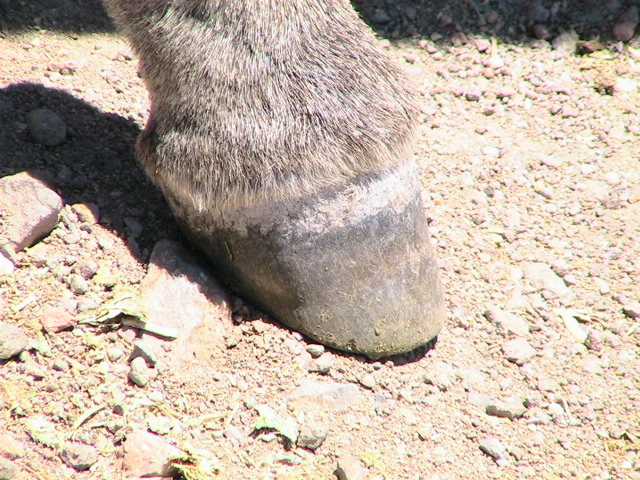 |
|
This young jennet still sports the remnant of her "foal tip" |
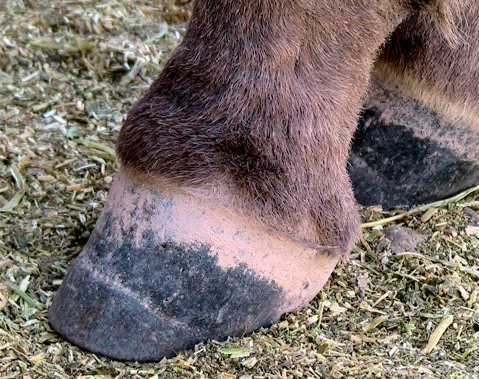 |
|
| Foot of one of the jennys as she
moved away and avoided contact. She is the one pictured at the very top
of the page. |
||
|
A closer look at the fat paint jenny
|
||
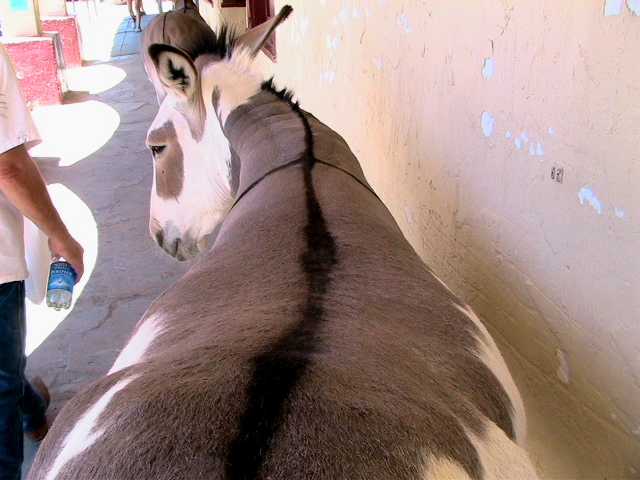 |
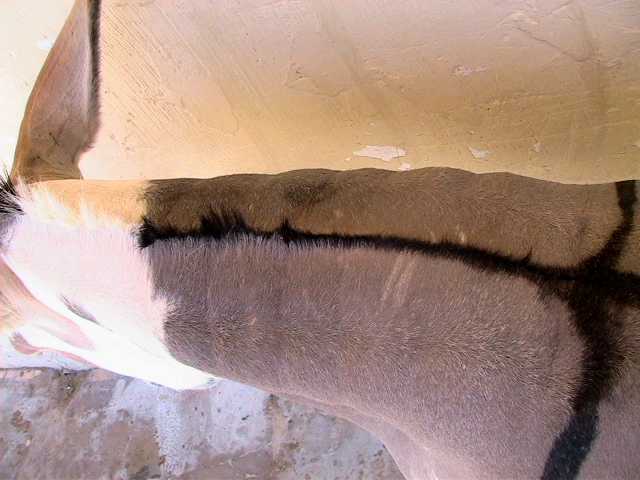 |
|
| You would think that her feet would be showing signs of impending laminitis...not so. | ||
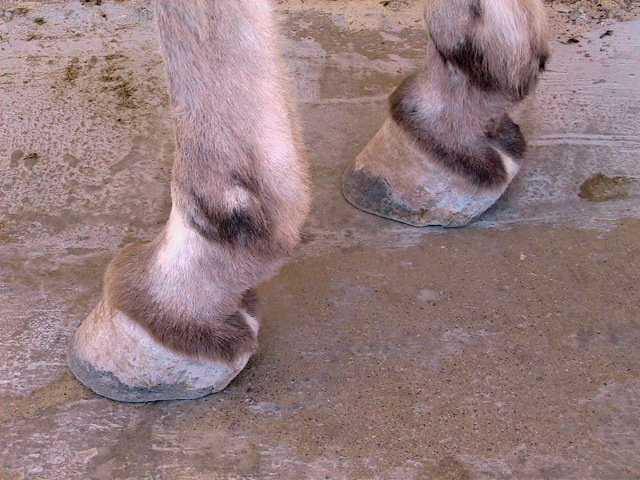 |
||
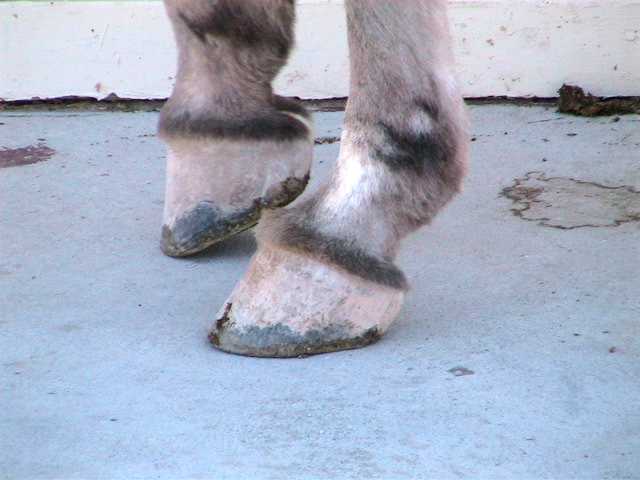 |
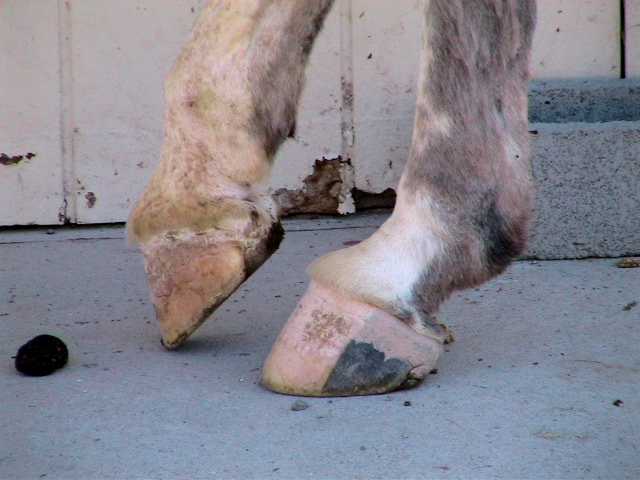 |
|
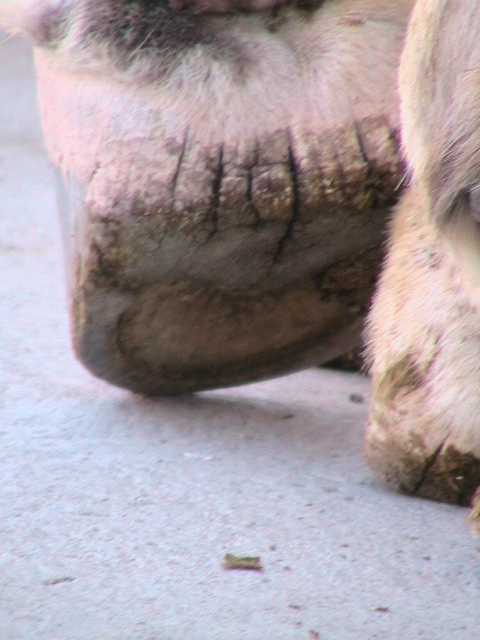 |
||
While threatening to bite me the whole time, one jenny finally allowed me to hold up her foot for a picture. |
||
Steve was also successful in teasing another jenny into picking up a foot.  |
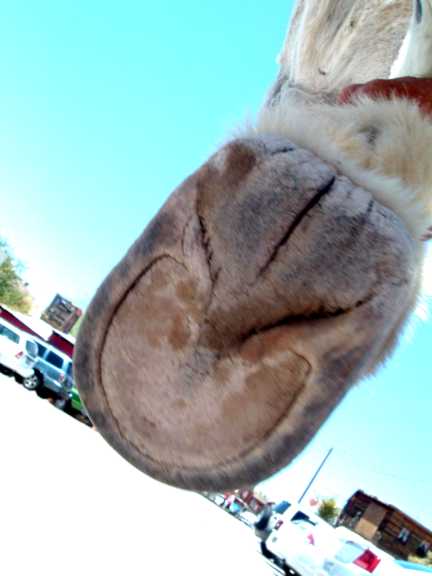 |
|
| Submitted
by Jeff Frame (see Central Asian feral horse
page) |
||
Wild burros in the Mexican scrub desert. I really like this picture which |
||
| |
||
As usual, I haven't yet had time
to go through all the images and video from this trip.
But for those of you interested in what wild burro feet look like...this will give you a good start! Enjoy!
|
||
